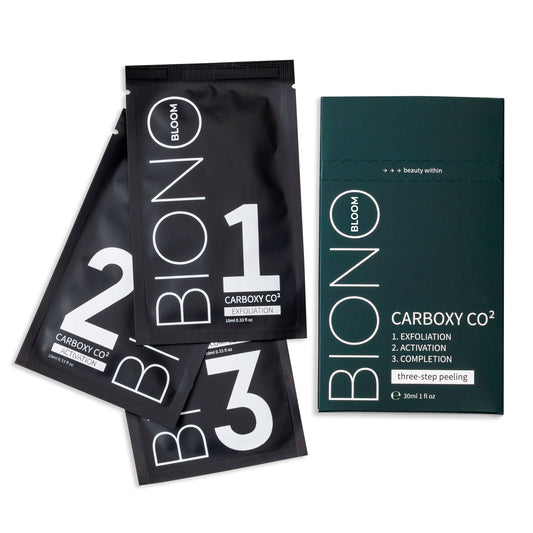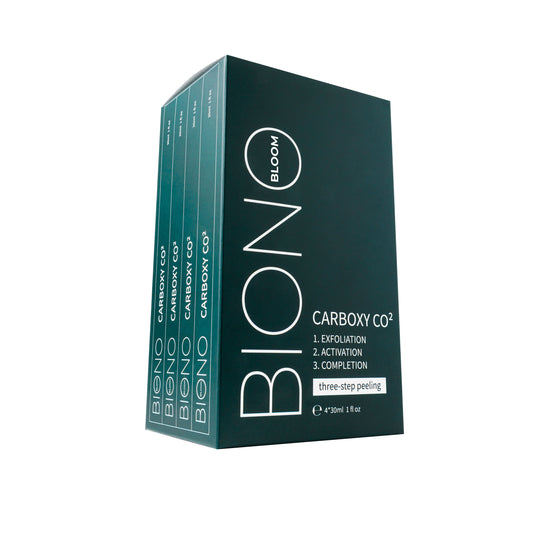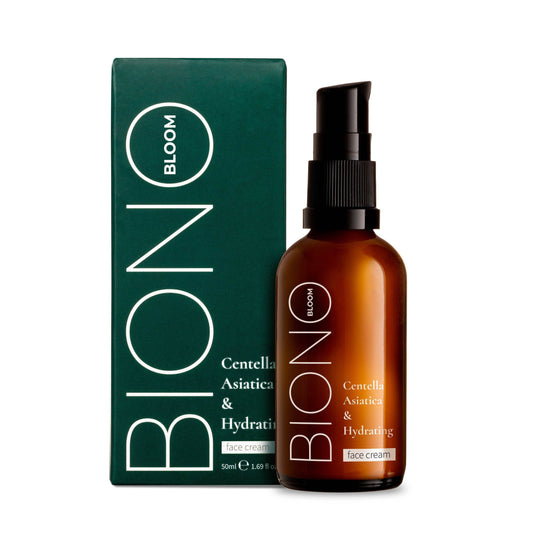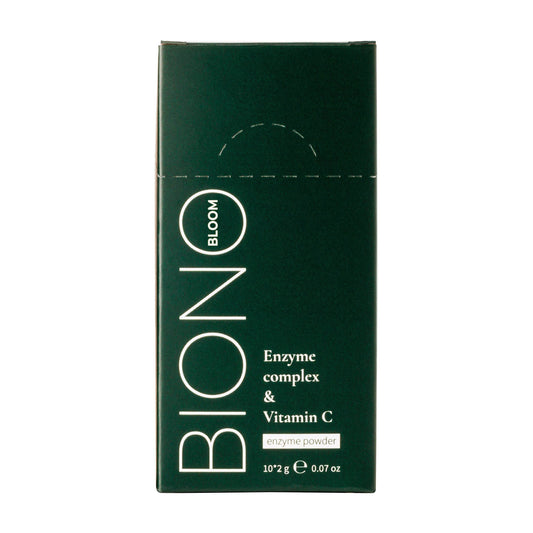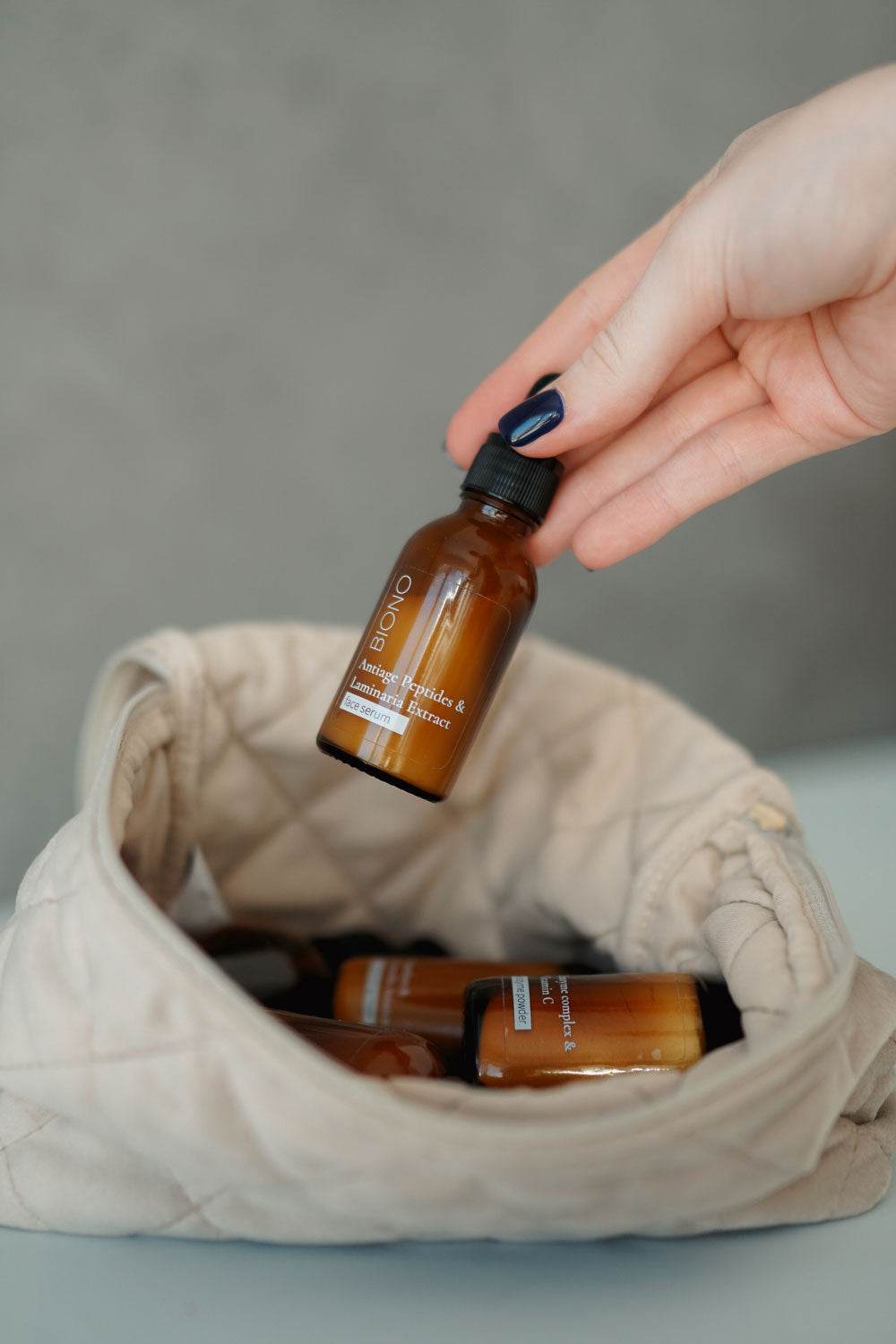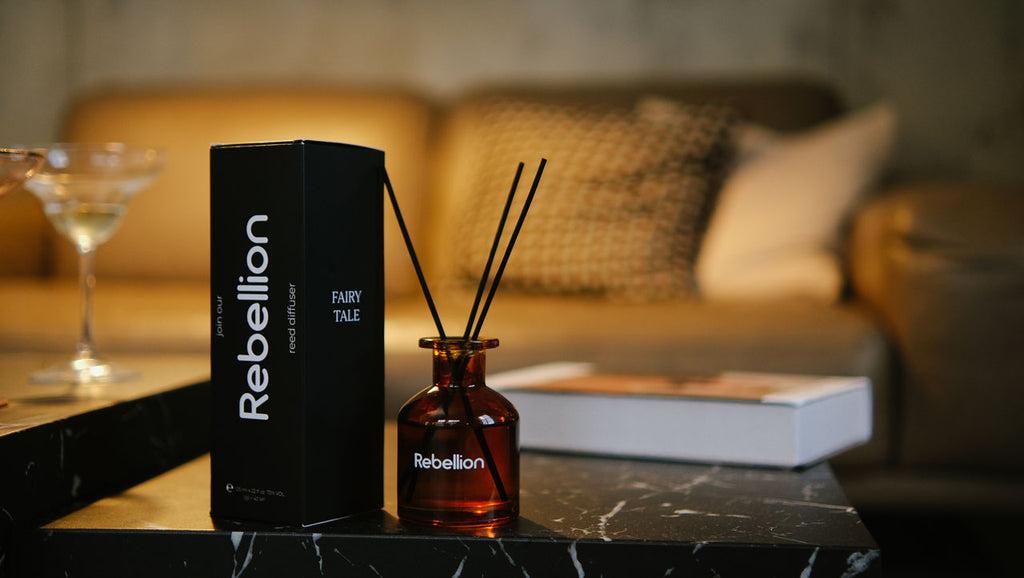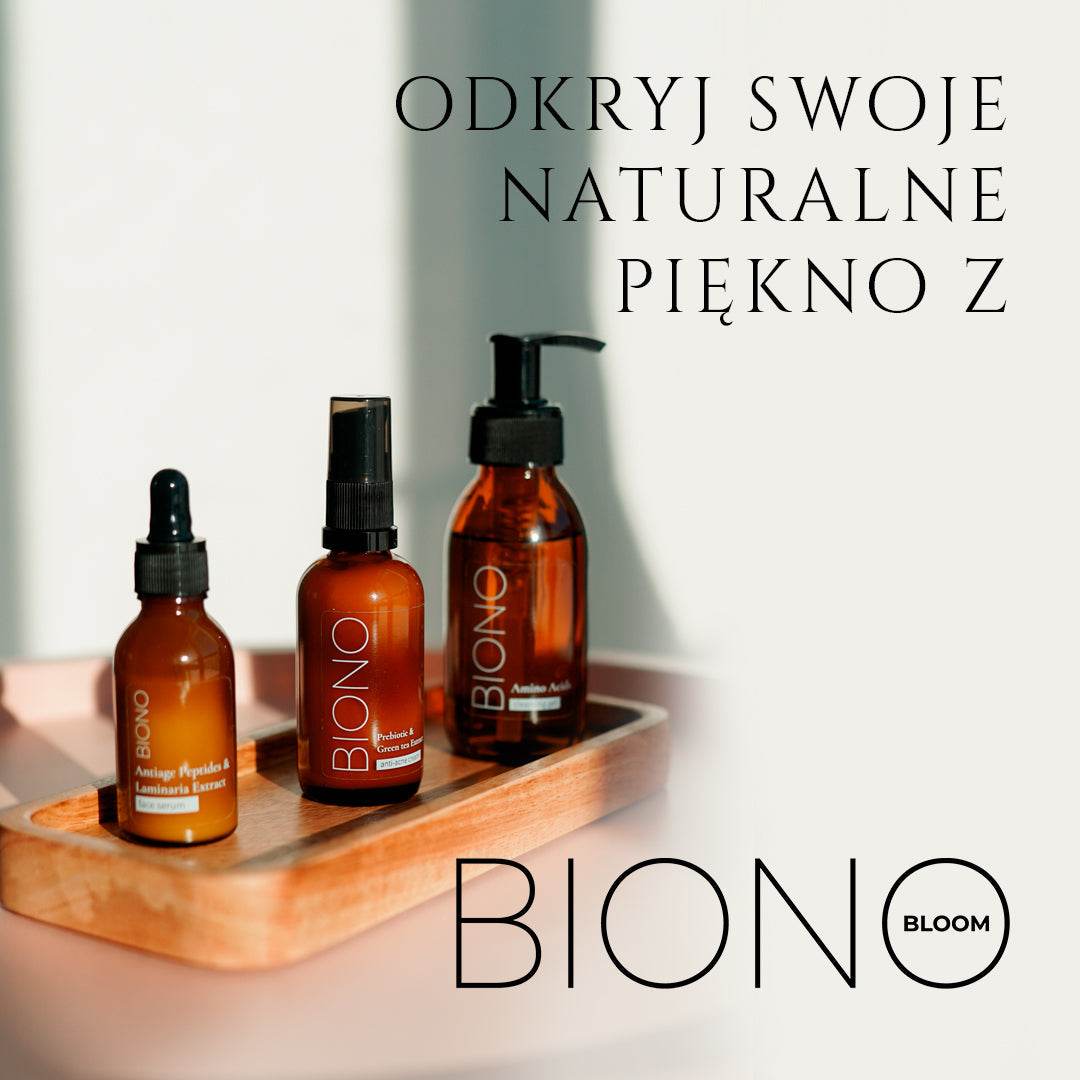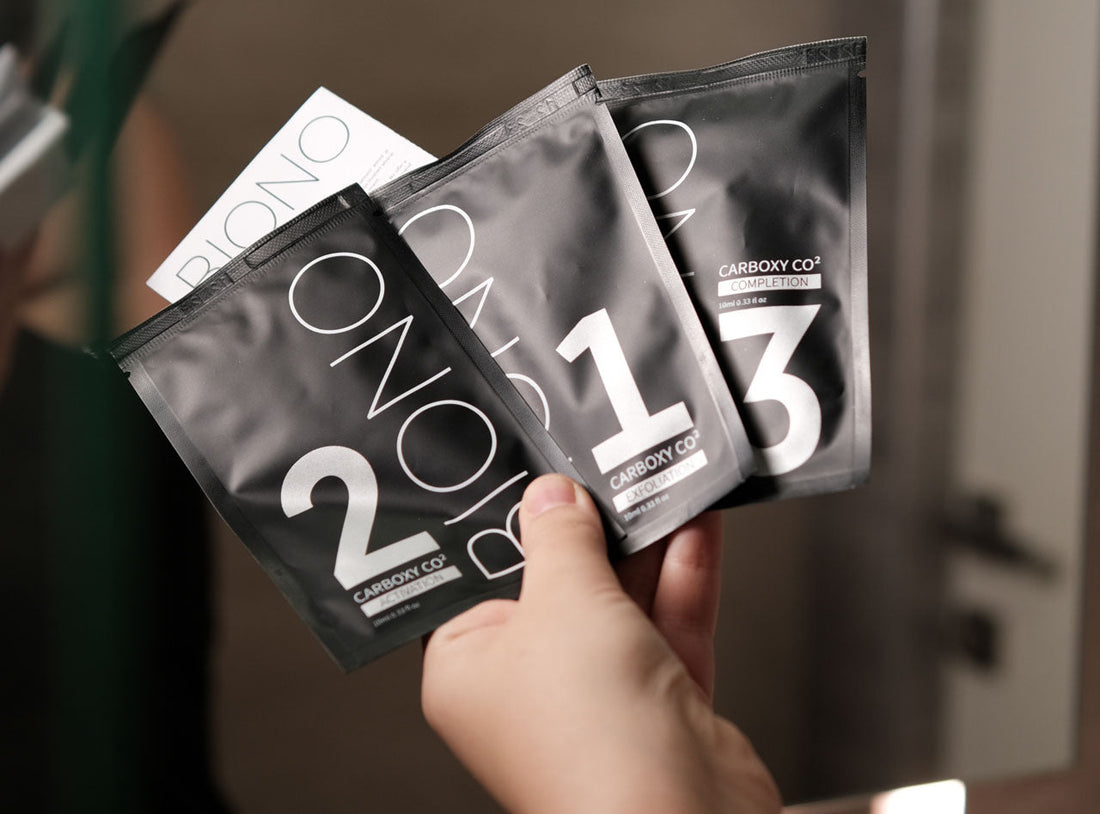
Professional cosmetics for carboxytherapy: a complete guide to modern CO2 therapy
Share
Carboxytherapy is one of the most modern skin rejuvenation methods, utilizing the therapeutic properties of carbon dioxide to stimulate natural regenerative processes. Professional carboxytherapy cosmetics open up new possibilities in aesthetic medicine, offering a non-invasive alternative to invasive surgical procedures. This revolutionary technology allows for spectacular results without a recovery period, making it an ideal choice for those seeking effective methods to combat the signs of aging.
The mechanism of action of carboxytherapy at the cellular level
Carboxytherapy is based on the Bohr effect, a well-known physiological phenomenon that describes the relationship between carbon dioxide and the release of oxygen from hemoglobin. When CO2 is introduced into tissues, the body interprets it as a signal of hypoxia and immediately activates compensatory mechanisms. It's like an alarm system in the body—the presence of CO2 causes the body to mobilize all its resources to deliver more oxygen to the affected area.
Professional carboxytherapy cosmetics utilize this natural mechanism by delivering a controlled amount of CO2 directly to the skin. Carbon dioxide diffuses through cell membranes, causing local vasodilation and increased blood flow. This results in improved cellular nutrition, accelerated metabolic turnover, and intensified regenerative processes at the molecular level.
Additionally, CO2 has antibacterial and anti-inflammatory properties, making carboxytherapy particularly effective in treating skin conditions such as acne and rosacea. Carbon dioxide lowers the skin's pH, creating an environment unfavorable for pathogenic bacteria. This is a natural sterilization method that doesn't disrupt beneficial skin microflora, unlike aggressive topical antibiotics.

Types of professional carboxytherapy systems
The modern market offers a variety of professional carboxytherapy cosmetics, which can be divided into several main categories based on application method and active CO2 concentration. Each system has its specific applications and advantages in various clinical situations.
Microneedle systems are the most advanced form of carboxytherapy, where CO2 is delivered directly to the dermis using ultra-thin microneedles. Professional devices of this type allow for precise control of the injection depth (0.5-2.5mm) and the volume of gas delivered. This is precision surgery at the cellular level – each CO2 pulse is precisely dosed and directed where it is most needed.
Transepidermal systems utilize special cosmetics in the form of gels, masks, or ampoules that release CO2 by reacting with skin moisture or through the activation of special capsules. These products are less invasive but also less intense. Ideal for clients who prefer a more gentle approach or as a maintenance therapy between microneedling treatments.
The latest hybrid systems combine the advantages of both approaches—they use lightweight microperforations to enhance the penetration of active CO2 cosmetics. This opens tiny "gates" in the skin, allowing therapeutic carbon dioxide to more effectively reach deeper tissue layers.
Indications and contraindications for carboxytherapy treatments
Professional carboxytherapy cosmetics are used for a wide range of dermatological and aesthetic concerns. Understanding the indications helps in optimally utilizing the potential of this technology in everyday practice.
Skin rejuvenation and wrinkle reduction are at the forefront. Carboxytherapy stimulates the production of type I and III collagen, improves skin elasticity, and reduces wrinkle depth by 30-60% after a series of 6-8 treatments. It is particularly effective around the eyes, where traditional methods can be too aggressive. CO2 acts as a natural internal lifting agent, requiring no downtime.
Problematic oily and acne-prone skin also responds well to carboxytherapy. Carbon dioxide regulates sebogenesis, reduces inflammation, and accelerates the healing of blemishes. Unlike traditional antibiotic treatments, carboxytherapy does not induce bacterial resistance and can be used long-term without the risk of side effects.

Cellulite and localized fat deposits are another indication where professional carboxytherapy cosmetics demonstrate impressive results. CO2 improves microcirculation, enhances lymphatic drainage, and stimulates lipolysis. Combining it with lymphatic massage can produce results comparable to liposuction, but without the surgical risks.
Main indications for carboxytherapy:
- Skin aging, wrinkles, loss of firmness
- Acne, seborrhea, enlarged pores
- Discolorations, acne scars
- Cellulite, local fatty deposits
- Alopecia, thinning hair
- Musculoskeletal pain syndromes
Treatment protocols and CO2 dosing
The effectiveness of professional carboxytherapy cosmetics depends largely on a precise treatment protocol, which must be tailored to the individual needs of the patient and the specific problem. Professional dosing is an art of balancing maximum effectiveness with therapeutic safety.
The standard protocol begins with a thorough skin analysis and determination of skin phototype according to the Fitzpatrick scale. Skin phototypes I-II require a more gentle approach with smaller volumes of CO2 (20-30ml per treatment), while darker skin better tolerates more intensive therapy (up to 100ml per session). It's like adjusting the intensity of your training to your physical condition—every body has its own individual limits.
Depth of application is a key parameter determining the effectiveness of the treatment. For surface problems such as fine lines or discoloration, a depth of 0.5-1mm is sufficient. Deep wrinkles and cellulite require application at a depth of 2-4mm, directly into the subcutaneous tissue. Professional devices allow for precise depth adjustment with an accuracy of 0.1mm.
The frequency of treatments also requires an individual approach. A standard cycle is 6-12 sessions performed every 7-14 days, depending on the problem and skin response. Maintenance treatments should be performed every 4-6 weeks. Some patients require a more intensive protocol with treatments every 3-5 days in the initial phase of treatment.
Modern technologies in carboxytherapy cosmetics
The professional carboxytherapy cosmetics industry is constantly evolving, introducing innovative technologies that increase the effectiveness and comfort of treatments. These technological advances open up new therapeutic possibilities and allow for an unprecedented level of treatment personalization.
Nanotechnology in CO2 delivery is a breakthrough that allows for the controlled release of carbon dioxide for up to 48 hours after treatment. Special nanocapsules containing CO2 precursors are activated by skin pH and body temperature, providing a prolonged therapeutic effect. It's like a slow-release drug system—a single treatment can last for several days.
Temperature-controlled systems utilize the effect of thermotherapy to enhance the effectiveness of carboxytherapy. Heated CO2 (up to 40-45°C) penetrates tissue better and intensifies metabolic reactions. Some devices also offer cryocarboxytherapy, where chilled CO2 (-78°C) has anti-inflammatory and anesthetic effects.
The latest advancement is AI-assisted systems that analyze skin response in real time and automatically adjust treatment parameters. Artificial intelligence monitors skin temperature, hydration, and vascular response, optimizing CO2 dosing for maximum effectiveness with minimal risk of side effects.

Side effects and management of complications
Professional carboxytherapy cosmetics are generally very safe, but like any medical treatment, they can cause certain side effects. Knowing these reactions and being able to predict and manage them is a key skill for every professional using this method.
The most common side effect is transient pain or discomfort at the application site, which can last from a few minutes to several hours after the procedure. The intensity of pain depends on the depth of application and the volume of CO2 administered. Patients describe this sensation as a "swelling" or "stretching" of the skin. Premedication with local anesthetics can significantly reduce discomfort.
Redness and swelling are natural reactions to CO2 injection and indicate a healthy vascular response. These symptoms should subside within 2-6 hours after treatment. Prolonged redness (longer than 24 hours) may indicate an excessive inflammatory response and require protocol adjustments in subsequent sessions.
Occasionally, bleeding may occur at the injection site, especially in patients taking anticoagulants or supplements that affect blood clotting. Therefore, a thorough interview before starting therapy is crucial.
Possible side effects and their management:
- Local pain: cooling compresses, local analgesics
- Erythema: avoiding sun exposure, soothing creams
- Swelling: position with raised headrest, lymphatic drainage
- Bruises: arnica, vitamin K, laser for vessels
- Infection: local antibiotics, antiseptic dressings
Combining carboxytherapy with other methods
Professional carboxytherapy cosmetics achieve their best results when combined with other aesthetic medicine methods. The synergistic action of various technologies allows for results that cannot be achieved with any single method.
Needle mesotherapy combined with carboxytherapy is a powerful combination, where CO2 prepares tissues to absorb active ingredients. Carbon dioxide increases the permeability of cell membranes and intensifies circulation, which enhances the absorption of active substances such as hyaluronic acid, vitamins, and peptides. It's like preparing the soil before planting—CO2 makes the tissue more "fertile" for subsequent treatments.
Radiofrequency microneedling (RF microneedling) following carboxytherapy produces spectacular results in skin lifting and firming. CO2 improves tissue electrical conductivity, allowing for deeper radiofrequency penetration. This combination can replace invasive surgical procedures in appropriately selected patients.
LED light therapy following carboxytherapy utilizes increased tissue blood flow to intensify photobiostimulation. Red light (660-850 nm) stimulates ATP production in mitochondria, accelerating cellular regeneration already fueled by CO2. It's like pouring gasoline into an already-heated engine.
Effective treatment combinations:
- Carboxytherapy + mesotherapy: intensification of the absorption of active substances
- CO2 + radiofrequency: maximum lifting and firming
- Carboxytherapy + chemical peeling: preparation for regeneration
- CO2 + LED therapy: accelerated healing processes
- Carboxytherapy + cryotherapy: counteracting inflammatory processes
Prospects for the development of carboxytherapy
The future of professional carboxytherapy cosmetics looks incredibly promising, with numerous clinical trials and technological innovations on the horizon. Developments in this field could revolutionize the approach to non-invasive aesthetic medicine in the coming years.
Personalized carboxytherapy based on genetic analysis is a field already being explored by leading laboratories. Analysis of gene polymorphisms responsible for collagen production, inflammatory responses, and fat metabolism will allow for the development of individualized treatment protocols. This represents a shift from "one-size-fits-all" medicine to precise therapy tailored to the patient's unique genetic profile.
Nanotechnology offers the potential to create "smart" carboxytherapy cosmetics that self-regulate CO2 release in response to tissue needs. Biosensors could monitor oxygen levels, pH, and temperature, automatically adjusting the intensity of the treatment. This is the vision of a cosmetic that "thinks" and adapts to the changing needs of the skin.
Telemedicine and home carboxytherapy are another exciting development. Portable carboxytherapy devices with remote monitoring by a specialist could democratize access to this technology. Patients could perform maintenance treatments at home under professional supervision, significantly reducing costs and increasing accessibility.
Professional carboxytherapy cosmetics represent the future of non-invasive aesthetic medicine. This technology combines scientific foundations, clinical effectiveness, and safety, offering a real alternative to invasive surgical procedures. The key to success lies in a proper understanding of the mechanisms of action, precise dosing, and skillful combination with other therapeutic methods. As technology advances and scientific knowledge deepens, carboxytherapy will play an increasingly important role in maintaining youthful and healthy skin for years to come.


